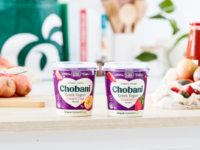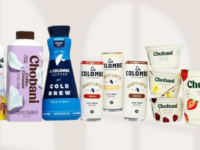 With the entire shopper marketing discipline changing, it is a fascinating and exciting time to be in retail marketing either as a brand manufacturer or a shop owner.
With the entire shopper marketing discipline changing, it is a fascinating and exciting time to be in retail marketing either as a brand manufacturer or a shop owner.
It is also the most challenging of times, with the fundamental shift making the entire world now a purchase platform … train station walls are stores, social networks are stores, even your fridge can be a store, and most certainly your smartphone is a store.
And while there were dire predictions that physical retail would die with the advent of online, the opposite is true. Traditional online players like Google and Amazon are opening brick-and-mortar stores, and brands are becoming flagship stores. Both brands and retailers are seeking the Holy Grail of a seamless experience online and in-store. It is not an either/or scenario, it’s an AND. We have moved from shopper marketing to shopper experience.
Experience first
We are living in a customer-centric marketplace where the No. 1 rule is: experience first.
Tech brands were among the first to drive direct physical brand experience through flagship stores. Like Apple, Microsoft and Samsung have been exploring ways to provide an engaging physical retail experience for shoppers with concepts like “community theatre” and meeting spaces. Telco and banking sectors have been making fundamental shifts in fusing services and retail, such as Telstra opening its “discovery hub”. But what of FMCG brands?
FMCG brands are playing with “experience” in all manner of ways. Brands like Chobani are opening experiential spaces in landmark locations like New York’s Soho district.
In the Australian market, Nestle was an early adopter, placing Nespresso in stores, pop-up food carts and at major events, growing an entire FMCG category outside grocery. Liquor brands like Bombay Sapphire are opening exclusive pop-up bars and food-matching degustation experiences around the country.
Blackmores opened a flagship store in Bondi in December offering a “wellness bar” with green smoothies, a ‘“mindful ocean” brain-scanning system to demonstrate the benefits of meditation, and a space for health workshops and yoga classes. MD David Fenlon labelled the store “next-gen interactive retailing” offering “human, digital and tactile experiences”.
Brands are also changing their marketing spend. Over Christmas, Cadbury UK spent the lion’s share of its £10 million (A$18.7 million) campaign on point-of-sale, social media, PR, TV, experiential and OOH (out of home) all with the aim of driving brand and product. Its investment in POS and in-store experiential activity had the aim of bringing “more joy and magic” to stores at a busy time of the year.
Products now services
What does this all mean for FMCG brands?
We have moved from product and brand-centric thinking through category to shopper-centric thinking. Every product is now a service – what is its benefit, does it save the shopper time or money, does it provide an easy answer to the daily grind of feeding a family?
Even pedestrian categories can become pleasure points when there is a clear benefit to the shopper and a positive brand experience. “Shoppers spend three things in store – time, money and angst,” says Kantar Retail MD Jason Mahoney. “By minimising these three inputs, we improve value for the shopper.”
Shopper behaviour experts agree on this fundamental shift in thinking. “It’s time for shopper marketing to move beyond consumer promotions and into the experiential space,” says Norrelle Goldring of GFK Australia. The global research house surveys 22,000 shoppers in 22 countries for its annual “Futurebuy” study, with its latest underscoring the role of the physical experience.
“Australian retailers and brands need to move beyond the simple cost of entry in physical stores on to providing shoppers with entertaining, stimulating (five senses), educational experiences,” says Goldring.
Researcher Peter Wilson of Koji describes the shift as “shopper marketing is then, shopper is now”. He says the difference is an all-encompassing focus on the most important stakeholder in a brand owner and retailer’s life – the shopper.
“Nowadays, it’s less about the push factors – putting products in their way and shouting at them with offers – to a more meaningful engagement based on an implicit understanding of the shoppers … their behaviour, needs and desires.”
Lee McClymont is GM for POPAI Australia & New Zealand. Visit popai.com.au
This article was first published in the April edition of Inside FMCG magazine. Click here to subscribe.















